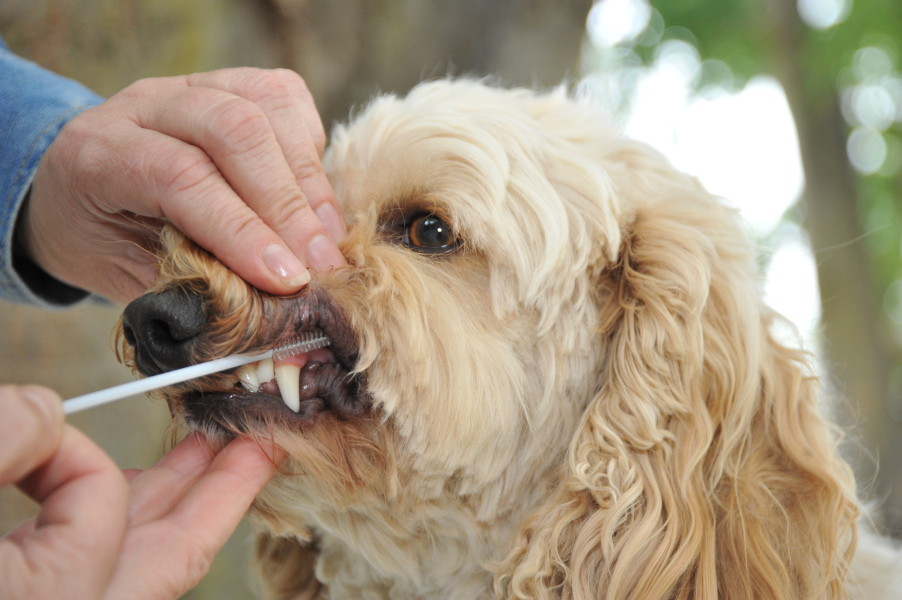Quick Summary
Click here for Price and Turnaround Time
Phenotype: Cone Rod Dystrophy 1 and 2 cause early onset retinal degeneration leading to blindness in the American Staffordshire Terrier and American Pit Bull Terrier. Visual impairment can be observed at less than one year of age with severe blindness by early adulthood.
Mode of Inheritance: Autosomal recessive
Alleles: N = Normal, CRD1 = Cone Rod Dystrophy 1 (American Staffordshire Terrier); CRD2 = Cone Rod Dystrophy 2 (American Pit Bull Terrier)
Breeds appropriate for testing: American Pit Bull Terrier, American Staffordshire Terrier, and dogs derived from those breeds
Explanation of Results:
- Dogs with N/N genotype will not have cone rod dystrophy 1 or cone rod dystrophy 2 and cannot transmit those variants to their offspring.
- Dogs with N/CRD1 genotype will not be affected by cone rod dystrophy 1, but are carriers. They will transmit this CRD1 variant to 50% of their offspring. Matings between two carriers are predicted to produce 25% cone rod dystrophy 1-affected puppies.
- Dogs with CRD1/CRD1 genotype will have cone rod dystrophy 1, a condition leading to blindness.
- Dogs with N/CRD2 genotype will not be affected by cone rod dystrophy 2, but are carriers. They will transmit this CRD2 variant to 50% of their offspring. Matings between two carriers are predicted to produce 25% cone rod dystrophy 2-affected puppies.
- Dogs with CRD2/CRD2 genotype will have cone rod dystrophy 2, a condition leading to blindness.
Results of this test can be submitted to the OFA (Orthopedic Foundation for Animals)
Sample Collection
Dog DNA tests are carried out using cells brushed from your dog's cheeks and gums. The preferred cytology brushes are sent to you by mail, or you may provide your own brushes. For accepted alternative brushes, click here
We recommend waiting until puppies are at least three weeks old before testing.

Step-By-Step:
- Make sure the dog has not had anything to eat or drink for at least 1 hour prior to collecting sample.
- When swabbing puppies, isolate each puppy from the mother, littermates and any shared toys for 1 hour prior to swabbing. Puppies should not have nursed or eaten for 1 hour prior to collecting sample.
- If collecting samples from more than one dog, make sure to sample one dog at a time and wash your hands before swabbing another dog.
- Label brush sleeve with name or ID of dog to be sampled.
- Open brush sleeve by arrow and remove one brush by its handle.
- Place bristle head between the dog’s gums and cheek and press lightly on the outside of the cheek while rubbing or rotating the brush back and forth for 15 seconds.
- Wave the brush in the air for 20 seconds to air dry.
- Insert brush back into sleeve.
- Repeat steps 5 - 8 for each unused brush in sleeve on a fresh area of cheek and gums. Make sure to use and return all brushes sent by the VGL. In most cases, it will be 3 brushes per dog. If using interdental gum brushes, please note that the VGL requires 4 brushes per dog and only moderate or wide interdental gum brushes are accepted.
- Do not seal brushes in sleeve.
- Place all samples in an envelope and return to the address provided.
ATTENTION:
- Do not collect saliva/drool – the key to obtaining a good sample is getting cheek cells on the swab
- Do not rub swab on the dog’s tongue or teeth – this will result in poor quality sample
- Do not collect a sample from a puppy that has recently nursed – the mother’s genetic material can rub off on the puppy’s mouth and contaminate the sample
Early onset retinal degeneration in the American Staffordshire Terrier (cone rod dystrophy 1, crd1) and American Pit Bull Terrier (cone rod dystrophy 2, crd2) result from mutations in PDE6B and IQCB1 respectively. Visual impairment can be observed at less than one year of age with severe blindness by early adulthood. Both mutations have an autosomal recessive mode of inheritance and thus males and females are equally affected. Carriers (with one copy of defective gene) have no apparent visual impairment and can only be detected through genetic testing. Within each breed, crossing of carriers is predicted to produce 25% affected offspring. Because the mutations are in different genes and thus independent from each other, a dog with one copy of each mutation will not be affected and crossing carriers of crd1 with carriers of crd2 will not produce affected offspring.
